Tag: Jordan Shallow
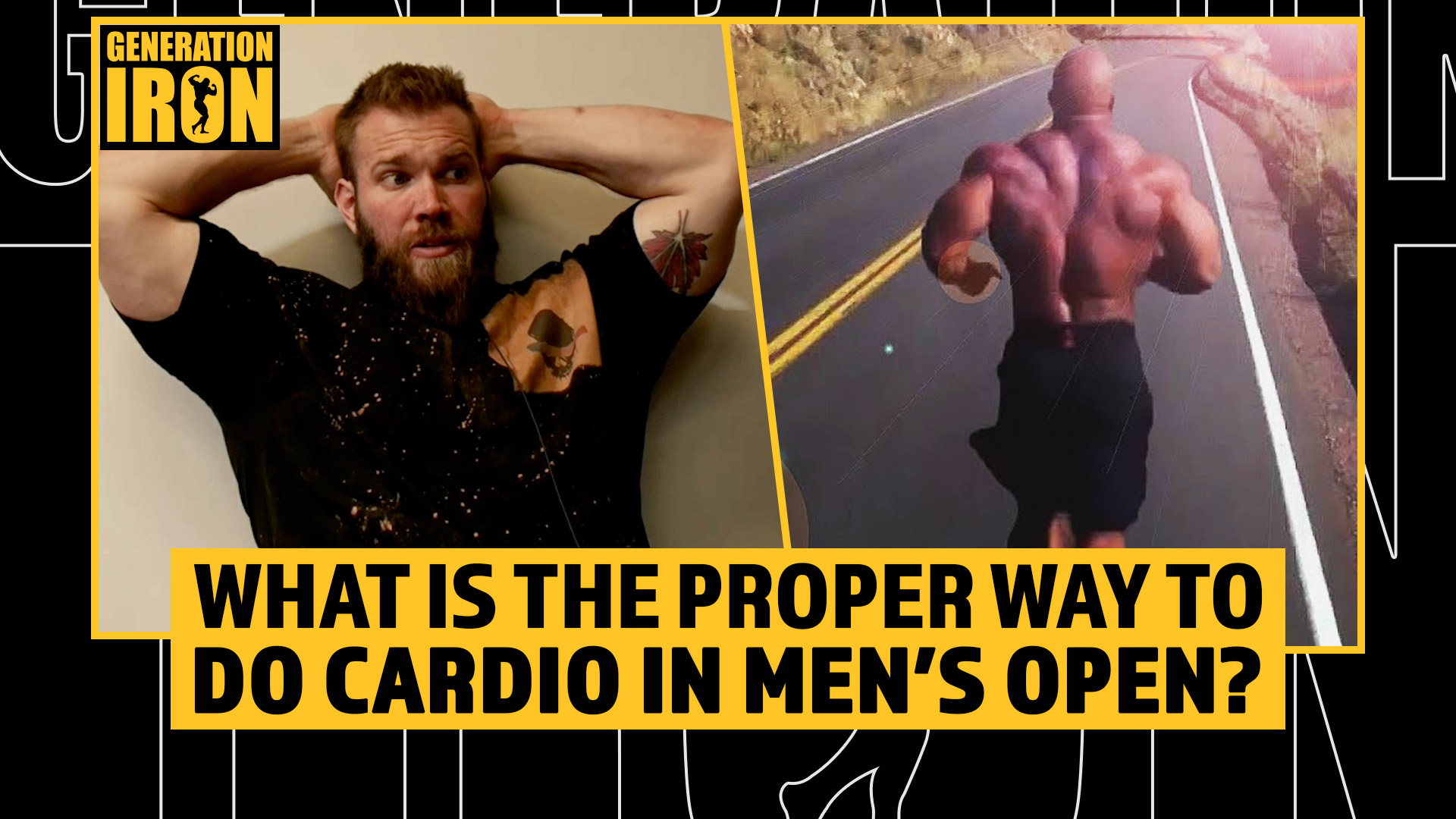
Jordan Shallow Answers: What Is Cardio’s Place In Men’s Open Bodybuilding?
[embedded content]
Jordan Shallow comments on different cardio tactics in Men’s Open Bodybuilding.
Bodybuilders hate cardio. At least, that’s the stereotype you often see within the sport. And this makes sense. Men’s Open competitors weigh in at around 250+ pounds. That’s a lot of weight, muscle or not, to move around with aerobic movement. That being said, all serious bodybuilders understand that cardio is a necessary part of training – whether they like it or not. The question is – how much cardio is too much? And how much is too little? What is the proper tactic for cardio in mass monster categories like Men’s Open bodybuilding? In our latest GI Exclusive, Jordan Shallow shares his advice on how to properly utilize cardio in a Men’s Open training program.
The biggest fear bodybuilders have about cardio is that it could burn away some of that hard earned muscle. Muscle, of course, is the key factor in sculpting a perfect physique and the lifeblood of a competitive bodybuilder’s career. However, a bodybuilder also needs to go through a cutting phase during contest prep to be as conditioned and shredded as possible on game day. Cardio is a part of that equation. On top of this, cardio has universal health benefits for your heart and lungs that should not be ignored.
So what’s the right answer here? We’ve heard of some successful pro bodybuilders who do zero cardio and others who do two hours of cardio during contest prep each day. What is the truly best tactic for including cardio into a Men’s Open bodybuilding program? The Muscle Doc Jordan Shallow gives his take on this very topic in our latest interview segment.
How to properly use cardio in a Men’s Open bodybuilding training program
Jordan Shallow believes that the days of a Men’s Open bodybuilder doing two hours of cardio during contest prep are over. The reason? Because more athletes are understanding that cardio during the offseason is not taboo but in fact vital towards building the proper core for contest prep later.
Shallow believes that a part of this shift is happening because competitors are wising up to the health risks of modern bodybuilding. Unfortunately, we had a tragic year of bodybuilding deaths in 2021 that has continued to bleed into the beginning of 2022. While we cannot directly correlate this to any specific aspect of the bodybuilding lifestyle – athletes are becoming more self aware of their health.
Jordan Shallow believes that doing three days of light cardio per week during the offseason is a huge benefit for a competitive athlete. It helps manage physical stress and also helps manage the emotional stress that comes with the competitive bodybuilding lifestyle.
Over time of building that simple cardio base during the offseason, a bodybuilder will require much less cardio during contest prep. If you combine this with thoughtful and tactical weight training that has cardio elements – you have a much more balanced training program and run less of a risk that you will burn muscle away.
Jordan Shallow points out Milos Sarcev’s giant sets as an example. Here’s what Shallow had to say in this example:
“You do a Milos giant set, that’s cardio. You’re running a marathon with your lats. You’re running a Milos lat marathon. But if you have a strong aerobic base you’ll be able to derive a more muscle building benefit in the actual duration of the set as well as have a greater toolbox to pull from to recover from that stimulus.”
Wrap Up
While Jordan Shallow is not a Men’s Open bodybuilder himself, he sees these kinds of changes happening on the inside of the industry. He believes that the taboo behind cardio is starting to lose its grip – which is beneficial for all in both terms of overall health and better contest prep.
You can watch Jordan Shallow’s full comments in our latest GI Exclusive interview segment above. He also talks about how the general public can learn to count their macros for fat loss.
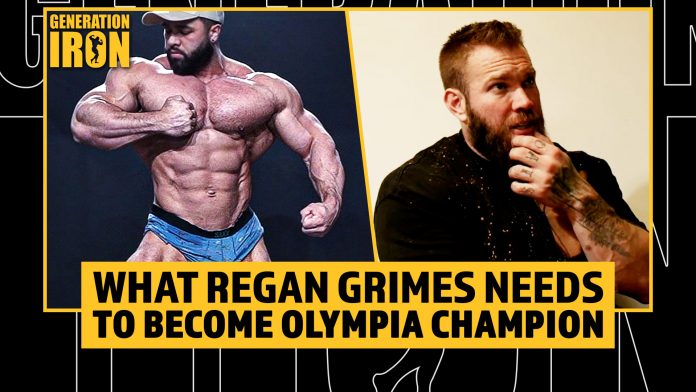
Jordan Shallow’s Analysis: What Regan Grimes Needs To Become Olympia Champion
Jordan Shallow believes that Regan Grimes simply needs one thing to become an Olympia champion… time and patience.
Regan Grimes has been a promising bodybuilder with an extremely focused mission to become an Olympia champion. His recent move to working with Milos Sarcev signaled just how serious he is about pushing his physique to the next level. There’s no doubt that Regan has been on the tip of everyone’s tongue over the past years – but he has yet to upgrade to that next level. In our latest GI Exclusive interview, The Muscle Doc, Jordan Shallow, shares his analysis on what Regan Grimes needs to become an Olympia champion.
Jordan Shallow is called The Muscle Doc for a reason. And that’s because he is a very knowledgable individual on all things muscle, weightlifting, and bodybuilding. While he’s not a bodybuilding guru per se, he has been an avid fan of professional bodybuilding for quite some time. That combined with his health and fitness knowledge make him a valuable resource of analysis for the present and future of bodybuilding. That’s why we decided to ask him about the hype behind Regan Grimes – and what the future may hold for his career.
Regan Grimes is a pro bodybuilder who has been on an extended hype train. In some ways, his journey is similar to Big Ramy. He continues to turn heads with each year – but ultimately fails to upgrade to that next level when it really counts – at the Mr. Olympia. That’s not to say he is a slouch of a competitor. In fact, the constant hype behind him shows just how impressive his physique is – it just needs that final push into champion status. The same was said for years with Big Ramy until his victories in 2020 and 2021.
So what does Regan Grimes need to go to the next level. With Big Ramy it was always clear – he needed to improve his conditioning. For Grimes it may be the opposite. His conditioning is often fantastic – but his size might not match up to the likes of someone reigning as champion the size of Big Ramy.
Jordan Shallow believes that there is not one specific thing Regan Grimes is doing wrong that needs improvement. In fact, he believes that Grimes is doing everything right. His latest decision to train under Milos Sarcev further proves that point. It shows that – A: Milos sees enough promise in him to spend time training Regan and B: that Regan is ready to push himself to the next level with a legendary trainer such as Milos.
So with that in mind, Jordan Shallow believes that Regan Grimes simply needs time. He’s young, still in his twenties and has plenty of time to gain further muscle maturity, experience, and growth. Big Ramy, by contrast, is in his late thirties. Shallow believes that time will simply benefit Grimes’ physique. Not only that, but the sport itself may also change over the coming years. Eventually Big Ramy will either step down or be taken down from Olympia champion status. Perhaps Grimes will not be the first one to do that. But perhaps when he is ready – the sport will look different than it does today.
ABOVE: Regan Grimes showcasing his recent physique three weeks out from the Arnold Classic 2022.
In that regard, Jordan Shallow doesn’t believe that Regan Grimes needs to pack on 300 pounds of muscle in order to win the Olympia. He just needs patience, focus, and continued hard work with someone like Milos Sarcev. In time, just like with Ramy over the past decade, Grimes’ strengths will become unstoppable.
You can watch Jordan Shallow’s full analysis of Regan Grimes’ physique in our latest GI Exclusive interview above.
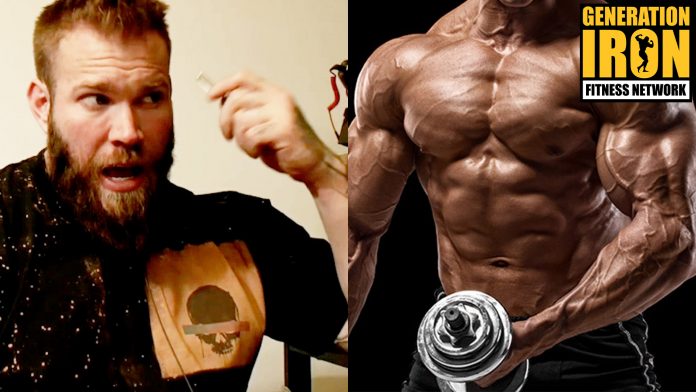
Jordan Shallow: Bodybuilding Would Need Less PEDs With Deeper Exercise Execution Knowledge
Jordan Shallow comments on recent deaths in bodybuilding, growing drug use, and the massive shift in physiques of modern bodybuilding.
While bodybuilding has always been somewhat taboo in the mainstream public due to perceived steroid use, the topic has become even more heated within the modern bodybuilding industry. Many coaches, experts, and past iconic athletes have gone on record stating they believe drug use has gone too far in modern bodybuilding. A recent string of tragic bodybuilding deaths, though unconnected, have further stoked the flames focusing on drug use and health in the sport. In our latest GI Exclusive, The Muscle Doc Jordan Shallow offers his opinion on PED usage in bodybuilding.
There is no doubt that PEDs are used in the sport of bodybuilding. In fact, this is true of nearly all professional sports. Those who want to achieve greatness are willing to do anything to reach that goal. This can also create a slippery slope. If athletes know the top pros are using PEDs, then they will feel they have to use them in order to stay in the same playing field. Then the cycle continues.
But perhaps it doesn’t have to be this way. During our conversation with Jordan Shallow, we fell onto the topic of health in bodybuilding and the recent deaths that have tragically plagued the sport. It should be pointed out that causes of death have not been revealed for nearly all of these cases. Regardless, it has caused a wave of bodybuilding icons, experts, and coaches to weigh in on drug use in the sport. Jordan Shallow believes there is a world where the same muscular results can be achieved while using less PEDs.
The common understand is this – if bodybuilding became more healthy, it would become less exciting with smaller physiques. While it’s true that bodybuilding will always demand some level of extreme risk taking – Jordan Shallow believes that the risks do not need to be anywhere near as high as they are today.
“Obviously it’s multifactorial and I don’t want to defame anyone or do anything like that,” Jordan Shallow states in our interview. He continues:
“But I think, you know, if we look deeper at exercise execution and we can set up exercises to maximally challenge muscle and get the greatest amount of return. We wouldn’t have to augment recovery the way we do with performance enhancing drugs and we can maybe expedite the ability for us to garner proper stimulus.”
It should be note that many pro bodybuilders have a vast understanding of exercise and how it works. That’s their job. But Jordan Shallow seems to believe that modern bodybuilding is taking a turn towards chemical solutions rather than deeper physical ones. Shallow admits that his statement is based purely on anecdotal evidence. But in his personal experience, he’s claimed that over the past 10 years or so – he’s had more conversations with bodybuilders about augmenting training with PEDs and less about further and deeper study of maximizing exercise.
This statement seems to also match others we have heard from older bodybuilding legends in the sport. Occasionally throughout our GI Exclusive interviews, veteran bodybuilders have claimed younger bodybuilders start turning towards PEDs much earlier. The common belief is that old school bodybuilders trained naturally much longer into their careers. They only turned to PEDs when they hit the maximum they could possibly push naturally.
Today, many veteran bodybuilders worry that young athletes turn to PEDs like steroids right away – before they even get a full understanding of what they can accomplish naturally. It must be noted that all of these statements are based on here-say. It’s anecdotal stories based on personal experiences. This can in part be classic rose-tinted nostalgia. A “my era is better than yours” mentality. But there also might be some truth to it.
The internet and advancements in science have changed the way PEDs are used by athletes (and even regular fitness enthusiasts) significantly. The drug world in bodybuilding is certainly not the same as it was 30 years ago. Perhaps Jordan Shallow is simply pointing out the same thing. That we are getting too much information and too many advancements too fast. That detailed knowledge is falling to the wayside in replacement of quick internet facts and easy to obtain PEDs.
What do you think? Watch Jordan Shallow’s statements in our latest GI Exclusive segment above and let us know your thoughts!
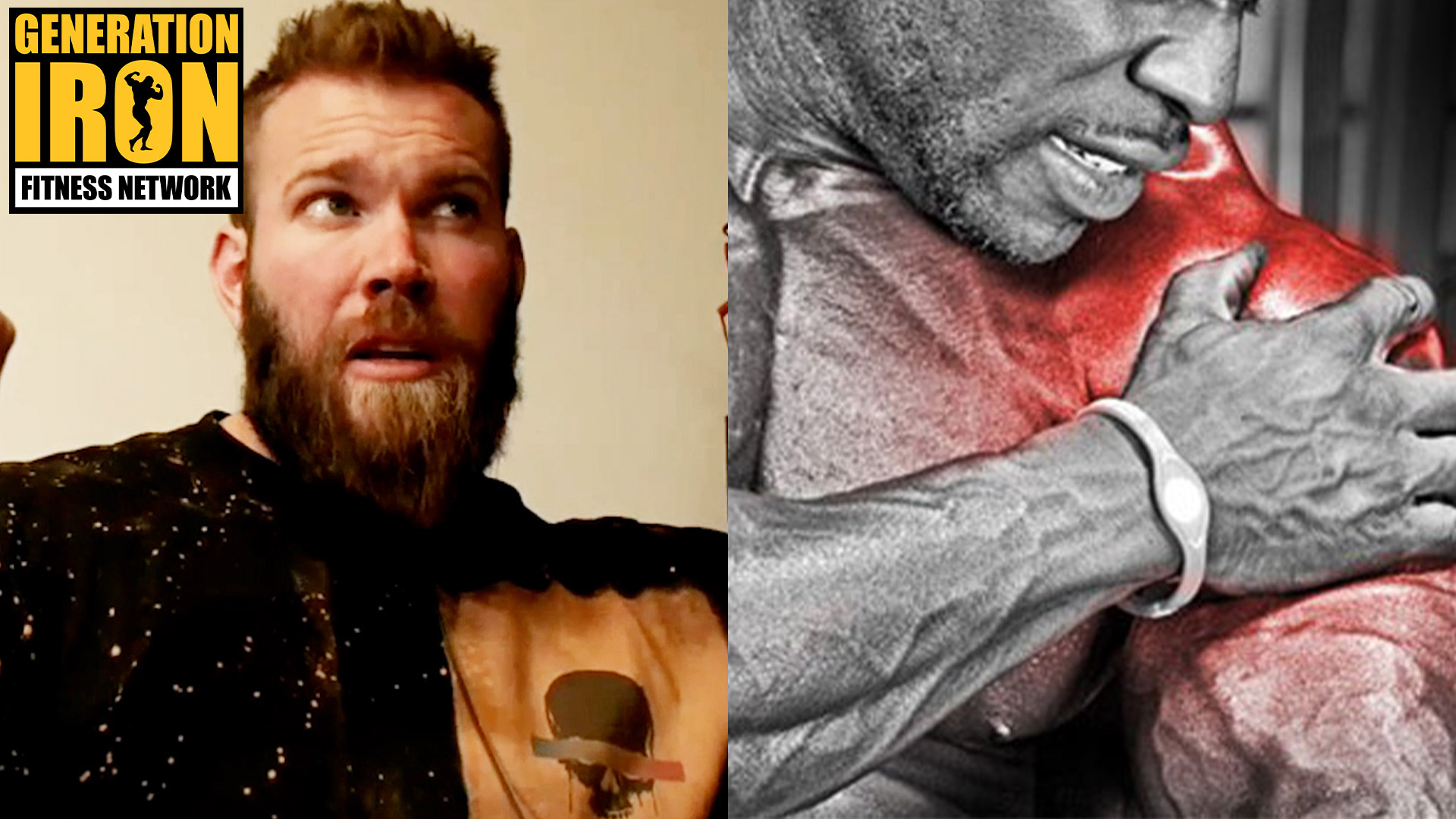
Jordan Shallow: Most Common Gym Injuries & Biggest Mistakes When Training To Failure
[embedded content]
The Muscle Doc Jordan Shallow goes into detail about the most common gym injuries, how to avoid them, and how this affects training to failure.
While a gym and gym equipment is designed to be safe tools and a safe environment for building muscle and strength – injuries certainly can occur. This is the unfortunate truth behind lifting heavy weight no matter the precautions. That being said, there are many injuries that could be avoided. That’s why we’ve turned to The Muscle Doc for advice on how to avoid potential life-altering injuries in the gym. In our latest GI Exclusive, Jordan Shallow details the most common gym injuries, how to avoid them, and the biggest mistakes while training to failure that often lead to injury.
An injury gained during training should be no joke. While it’s somewhat common to get general aches and pains over time. A serious injury can alter the rest of your life. For athletes in professional or competitive sports – it can also drastically alter their career forever. This certainly holds true for pro bodybuilders. An injury keeps a bodybuilder out of the gym. This affects their physique and timing – which could drop them out of a vital show. Even more seriously, an injury such as a muscle tear can lead to a permanent end to a bodybuilder’s career.
That’s why during our conversation with The Muscle Doc Jordan Shallow – we dove deep into the cause of the most common gym injuries and how to avoid them. While speaking to Shallow, he explained that the most common injuries he’s delt with in his years of his career are shoulder and knee injuries. Elbows and hip injuries are quite common as well. This makes sense of course – these are joint areas that, even beyond gym training, get damaged over time with age for most individuals.
While it’s impossible to completely avoid all injury when lifting heavy weight and pushing the body to new levels, there are two key factors to consider to help avoid these kinds of injuries. Jordan Shallow explains that load management and technique are the biggest elements in avoiding injury.
This might seem obvious, poor form and ego lifting lead to injury. But it’s something that can’t be stressed enough. Jordan Shallow also points out that improper volume is not just too much weight. This can also mean too much intensity, too much frequency, or too much density. There is a delicate balance between pushing yourself to growth and pushing yourself to injury. That’s why it is always important to start off slow – especially for beginner lifters – so that you can understand your body’s limits.
In bodybuilding and many high-level strength sports, training to failure is an important aspect towards strength and muscle growth. So how does one train to failure, without pushing too far and injuring themselves? Jordan Shallow explains that training to failure is, of course, important for serious growth. But the problem is the definition of failure in this context. Here’s what Shallow had to say about training to failure in practical terms:
“I think there’s a bigger conversation when ti comes to training to failure which is defining failure. Because failure, depending on the exercise, can be different depending on what the exercise is… Failure is a relative term. And I think the conversation gets so oversimplified…”
He goes on to explain that there can be failure on a technical level vs failure on a physical muscular level. The decision on which version of failure to reach depends greatly on what exercise you are doing and your experience level. The problem with “training to failure” when discussed in general terms – is that this nuance can get lost. Then people are pushing for the wrong things and get hurt.
Jordan Shallow provides very specific examples to further explain his case in this regard. You can watch our GI Exclusive above to get that exact detail as well as his other comments on the most common gym injuries you should be avoiding.
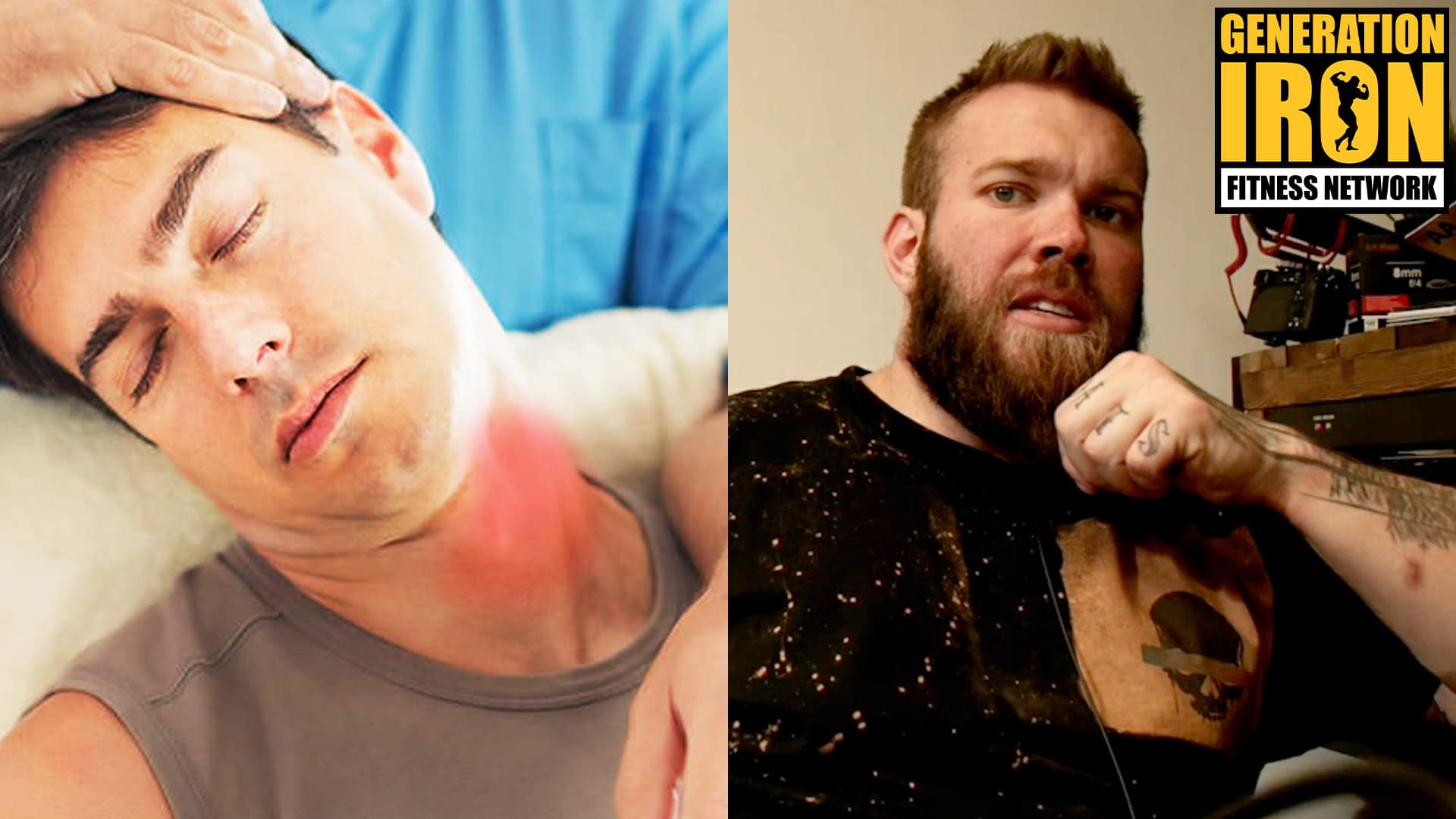
The Muscle Doc Jordan Shallow On The Stigma And Vast Misconceptions Of Chiropractors
[embedded content]
Jordan Shallow, aka The Muscle Doc, breaks down the realities behind chiropractors and their place for bodybuilders.
Dr. Jordan Shallow is probably best known in media as The Muscle Doc. He’s a Chiropractor, Strength and Conditioning Coach, and hosts the RX’D RADIO podcast. He’s a vastly knowledgable person when it comes to fitness, bodybuilding, and strength sports. Which is why we connected with him to discuss a wide range of topics. In our latest GI Exclusive, Jordan Shallow debunks myths about chiropractors and evaluates their relationship with pro bodybuilding.
The world seems to have a love/hate relationship with Chiropractors. Some people believe they are a total scam, while others swear by them. And even those in the middle seem to be disappointed if a chiropractor can’t accomplish the healing that a patient is looking for. Dr. Jordan Shallow is a chiropractor himself – and spent some time during our GI Exclusive interview detailing the realities behind the profession. He also explains why the public has such a complicated relationship to it.
During our discussion about Chiropractors, Jordan Shallow was hesitant to give any blanket advice. The reason for this, is that every patient’s body is different. There is no general rule of how, when, or why to use a chiropractor. In fact, he wouldn’t want to trust any chiropractor that did provide black and white general advice.
This is because chiropractors are a form of manual therapy vs traditional medicine. Traditional medicine is often consistent. You know what you will get when you go to a typical doctor’s visit. But a chiropractor visit can be vastly different depending on who is your doctor and what your specific needs are.
“Say what you want about conventional medicine – I know what I’m going to get when I got to a doctor’s office,” Jordan Shallow states in our interview. He continues:
“For better or worse, at least it’s consistent. Which I think is one thing people are always hesitant with when approaching manual therapies of any kind. Is the relative inconsistency, especially at the level of chiropractor, of wha the treatment is going to look like.”
Jordan Shallow points out that the consistency of a traditional doctor can be a blessing and a curse. It means both successes and failures for your ailment will be relatively consistent. Whereas manual therapies like a chiropractor can open your options and provide relief where a traditional doctor might otherwise not be able to.
That being said, there is such a wide variety of approaches a chiropractor can take – which can lead to trial and error for a patient’s experience. This can often lead to frustration for the patient. On top of this, there are pop culture references that often depict chiropractors a certain way – which might flavor the opinion of a potential patient before ever even visiting a chiropractor.
On top of this, the advent of social media has also allowed for viral videos to mislead people on chiropractors as well. Jordan Shallow mentions Tik Tok chiropractors that “Jean Claude Van Damme people’s heads off” that are more stunt than they are realistic therapies that should be used in a professional environment.
So where do chiropractors come in for bodybuilding? We’ve seen across many pro bodybuilders’ socials and also many time in our very own films that top pros often go to chiropractors. Jordan Shallow had some words on that as well. Most specifically the instrument assist soft tissue mobilization (aka the metal bar you see make pro bodybuilders scream like babies).
Jordan Shallow thinks this is a case where it’s become over-popular. That many bodybuilders believe that it’s breaking up scar tissue – which in Shallow’s opinion is impossible. If it were breaking up scar tissue, the pressure needed would also break the person’s bones. So what he’s seeing here with this popular chiropractic tactic is that a little of this bar probably helps somehow on a neurological or vascular level.
The reason it has become so popular seems to be tied into something called “dose dependent relationships.” It’s a concept that Jordan Shallow believes bodybuilders are predisposed to getting tied up into. He explains in our interview –
“Bodybuilders get tied into what’s called a dose dependent relationship. If some is good, more is better. And we’ve seen this play out to the detriment over the last six months it seems but we all fall victim to it man. When I first started training I was like, ‘Wait creatine can make me bigger? So if 20 grams is good, 40 grams must be better – you’re an idiot.”
Jordan Shallow doesn’t see this as a problem unless it gets out of hand. In fact, as is mentioned in the quote above, he thinks it’s a part of what everyone goes through as they learn more about strength and fitness.
So it would see that chiropractors, like most things, is far more complicated than can be explained in pop culture or in broad media profiling. Ultimately, it depends on each individual to decide what is right for them. And as with any medical profession – doing your own personal due diligence to ensure the person you are working with is an actual professional.
You can watch Jordan Shallow’s full comments in our latest GI Exclusive interview segment above. And make sure to stick around in the coming weeks for more excerpts from our in-depth conversation with The Muscle Doc!
